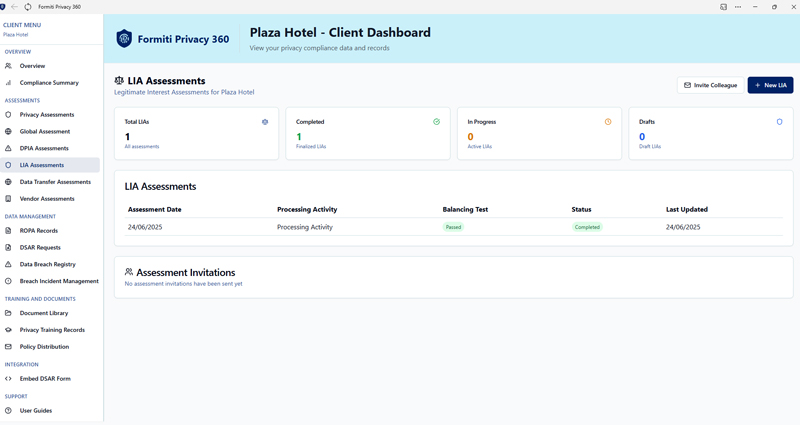The Labyrinth of Legitimate Interests: Why Manual LIA's Are a Compliance Nightmare
1. Navigating the complex landscape of data privacy is a constant challenge for organisations today. Among the various lawful bases for processing personal data under regulations like the GDPR and UK GDPR, Legitimate Interest often stands out for its flexibility. Article 6(1)(f) allows for data processing when it's "necessary for the purposes of the legitimate interests pursued by the controller or by a third party, except where such interests are overridden by the interests or fundamental rights and freedoms of the data subject."
2. This flexibility, however, comes with significant responsibility. Relying on legitimate interests demands a robust assessment, often referred to as a Legitimate Interest Assessment (LIA), which requires navigating a crucial three-part test: identifying a Purpose, ensuring Necessity of processing, and conducting a thorough Balancing Test between the organisation's interests and the data subjects' rights and freedoms. While seemingly straightforward, attempting to manage these critical assessments manually—often within generic document tools like Word or Google Docs—can quickly transform into a profound compliance nightmare.
The Foundational Issues of Creating & Completing LIA's in Generic Document Tools
3. The initial phase of drafting an LIA sets the stage for future compliance. When this stage is handled without a specialised platform, fundamental problems emerge:
Lack of Standardisation & Consistency
4. In a manual environment, there's no enforced template or structured input. Different departments or even individuals might create LIA's using varying formats, omitting critical sections, or interpreting requirements inconsistently. This leads to a patchwork of assessments where it's impossible to compare, aggregate, or confidently rely on the data. For a Data Protection Officer (DPO) or compliance team, this fragmentation means a significant compliance gap, as demonstrating consistent application of privacy principles becomes a Herculean task.
Version Control Chaos
5. If you've ever dealt with document names like LIA_final_v2_with_comments_FINAL.docx, you'll understand the agony of manual version control. When multiple stakeholders collaborate on an LIA—legal, marketing, IT—emailing documents back and forth inevitably leads to conflicting changes, lost feedback, and immense confusion over which version is the definitive, approved one. This absence of a single source of truth introduces critical risks, as an organisation might inadvertently rely on an outdated or unapproved assessment.
Data Silos & Lack of Centralisation
6. Manual LIA's are inherently scattered. They reside in individual hard drives, departmental shared folders, cloud storage, or buried deep within email inboxes. This creates pervasive data silos, preventing any holistic view of an organisation's processing activities that rely on legitimate interests. Trying to pull together a comprehensive report for an internal audit or a regulatory inquiry becomes a monumental, time-consuming effort, if not entirely impossible. Without centralisation, effective oversight and risk management are severely hampered.
Absence of Integrated Audit Trails
7. A core principle of modern data protection is accountability, which demands demonstrable compliance. Manual documents inherently lack a built-in, immutable audit trail. You can't easily see who accessed the document, when changes were made, who approved specific sections, or the exact sequence of decisions. During a regulatory investigation, being unable to reconstruct the complete history of an LIA – from initial draft to final approval – can expose an organisation to significant penalties and reputational damage.
The Hidden Inefficiencies
8. Beyond the compliance risks, manual LIA creation is simply inefficient. Time-consuming administrative tasks—formatting documents, chasing down comments via email, consolidating feedback, and manually updating various versions—divert highly skilled privacy professionals from more strategic compliance work. This not only increases operational costs but also frustrates teams who are constantly battling administrative overhead instead of focusing on core privacy assessment.
Conclusion:
9. The initial phase of drafting Legitimate Interest Assessments in generic document tools lays the groundwork for a compliance framework that is difficult to manage, prove, and ultimately, trust. The fragmentation, lack of control, and inherent inefficiencies create a precarious foundation for any organisation striving for robust data protection.
However, the challenges don't end with creation. In our next article, we'll delve deeper into the even more profound operational burdens and compliance vulnerabilities that arise when attempting to manage and continuously review these critical assessments throughout their lifecycle without a dedicated privacy management platform.


